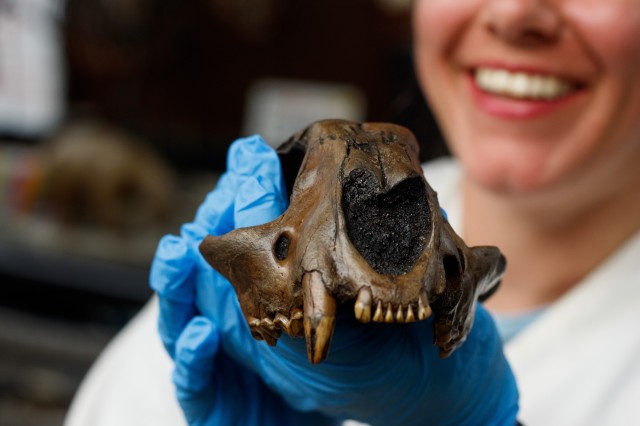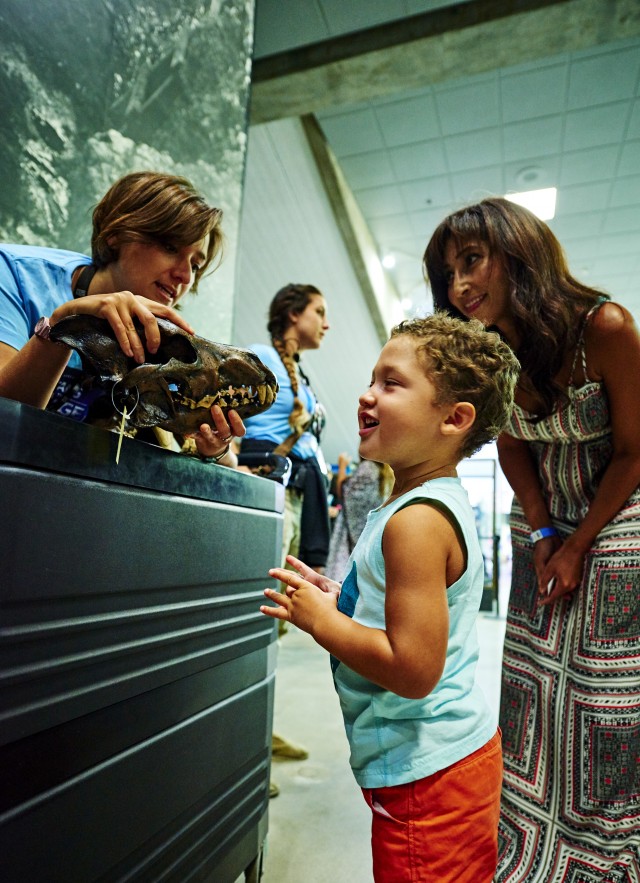
Learn More
In this lesson, students will use observational evidence to make a claim about how the external features of each animal's teeth would help them eat their food.

In this lesson plan, students will observe and compare the teeth of two fossil skulls from Ice Age Los Angeles: the dire wolf and the antique bison to further determine how an animal's teeth can tell us more about what and how that animal ate.
Students will compare two different animals to determine what they ate and how the structure and shape of their teeth helped them eat their food.
5 minutes to introduce the activity
5-10 minutes for student observations
10-20 minutes for student sketching
5 minutes to share evidence and support student claims
carnivore, herbivore, skull, mandible
Use the 3D and 2D images on this site, or view them in Google Slides.
ELA.W.2.7, ELA.W.2.8
Disciplinary Core Ideas:
K-LS-1-1, K-ESS2-2, K-ESS3-1, K-2-ETS1-2
Science & Engineering Practices:
Asking questions
Developing and using models
Planning and carrying out investigations
Analyzing and interpreting data
Cross-Cutting Concepts:
Patterns
Scale, Proportion & Quantity
Stucture & Function